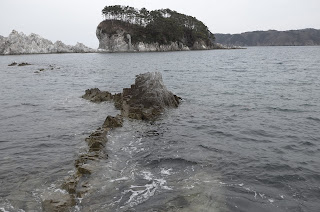 Tokyo Stock Exchange finished its operation
of this year on Wednesday. Nikkei Average of the day was ¥19,033.71, rising
from the final price last year by ¥1,582.94. With great amount of money supply
from Bank of Japan to the market, final Nikkei Average marked moderate growth
for four consecutive years. However, Japanese economy still holds negative
elements for next year, including end of inflation policy of United States
Federal Reserve Board or decline of Chinese economy.
Tokyo Stock Exchange finished its operation
of this year on Wednesday. Nikkei Average of the day was ¥19,033.71, rising
from the final price last year by ¥1,582.94. With great amount of money supply
from Bank of Japan to the market, final Nikkei Average marked moderate growth
for four consecutive years. However, Japanese economy still holds negative
elements for next year, including end of inflation policy of United States
Federal Reserve Board or decline of Chinese economy.
Final price on Wednesday was the highest
record after 1996. Following rally of U.S. market, Nikkei Average rose up for
three consecutive days. The market closed in the afternoon with the sound of
bell rung by classic music conductor, Yutaka Sado.
In the first half of this year, stock
market rallied with BOJ policy of monetary easing. Although the lowest price
was marked in January, Nikkei Average rose with not only BOJ policy, but
decision of introducing monetary easing by European Central Bank. After
reaching ¥20,000 in April for the first time in these fifteen years, Nikkei
Average kept on rising and marked the highest of this year, ¥20,868, in June. It
exceeded the highest price in 2000, when bubble economy led by information
technology appeared.
Chinese decline directly affected Japanese
economy in the summer and after. Chinese gross domestic products in the third
quarter went down below 7%, which was the same level in 2009 when Lehman Shock
shook the world economy. After Chinese government devaluated Renminbi for three
consecutive days in mid-August, Nikkei showed steep decline to ¥17,000 or below
in September. Speculation on Chinese economy doubted its situation as bad as
requiring for maintenance of export with manipulation.
When Chairwoman of FRB, Janet Yellen,
announced the end of zero interest policy in December, Tokyo Stock Exchange was
not affected so badly. Stable U.S. economy is also a stabilizer of Japanese
economy. But, a great concern is the impact of FED policy on emerging economy.
If money goes back from emerging countries to U.S., worsened emerging economy
will affect Japanese stock market. Cheap petroleum also causes negative impact
on the economy of oil exporting countries.
Shinzo Abe administration keeps on
announcing that high Nikkei Average is a symbol of success of Abenomics. But,
economists know the vulnerability of stock market supported by monetary policy.
To persuade the world and Japanese citizens of its viability, Japanese
government needs to make more efforts for further and sustainable growth.
















